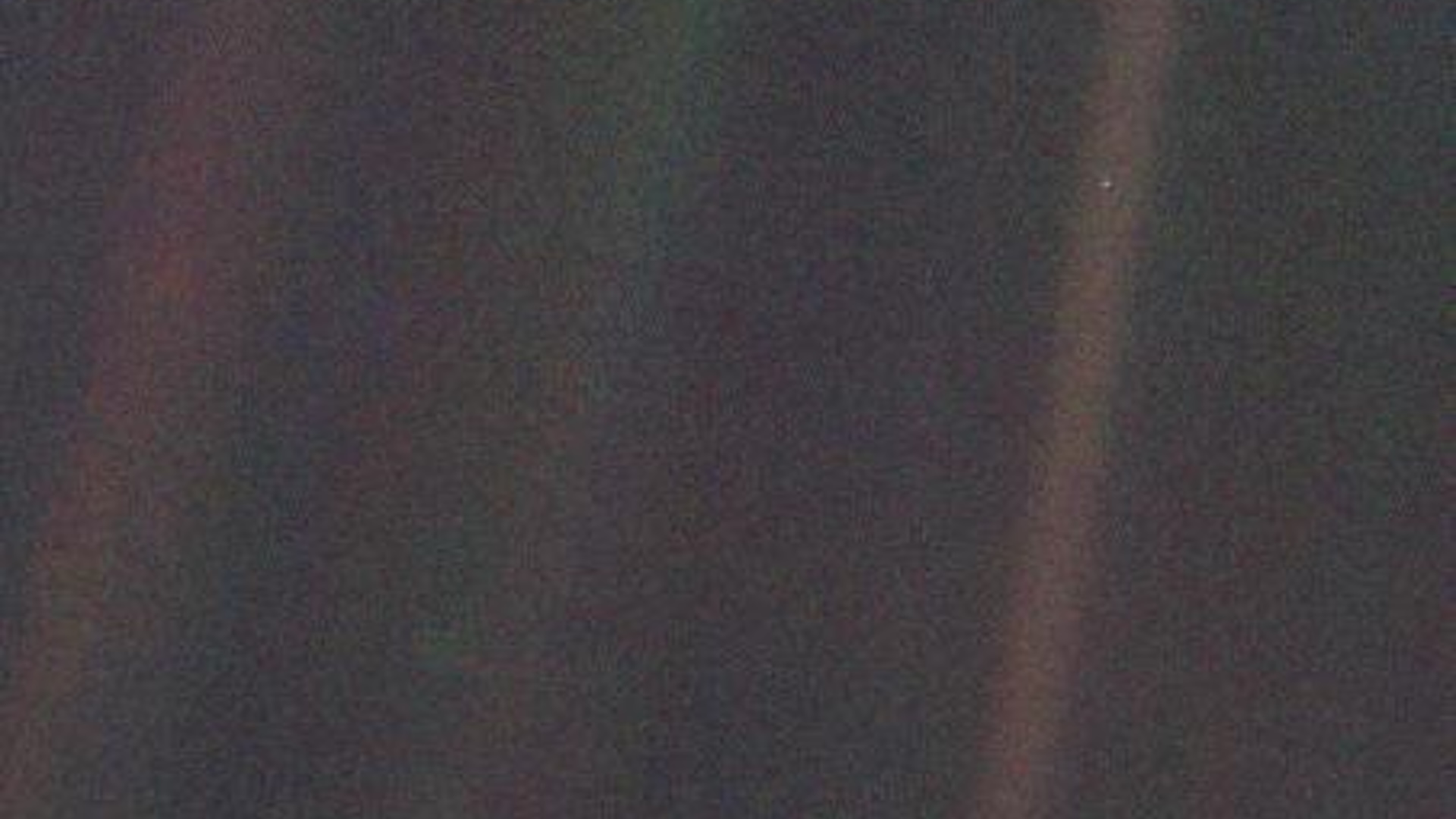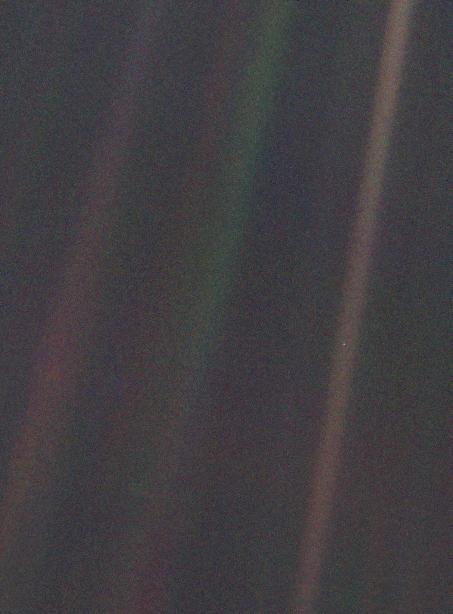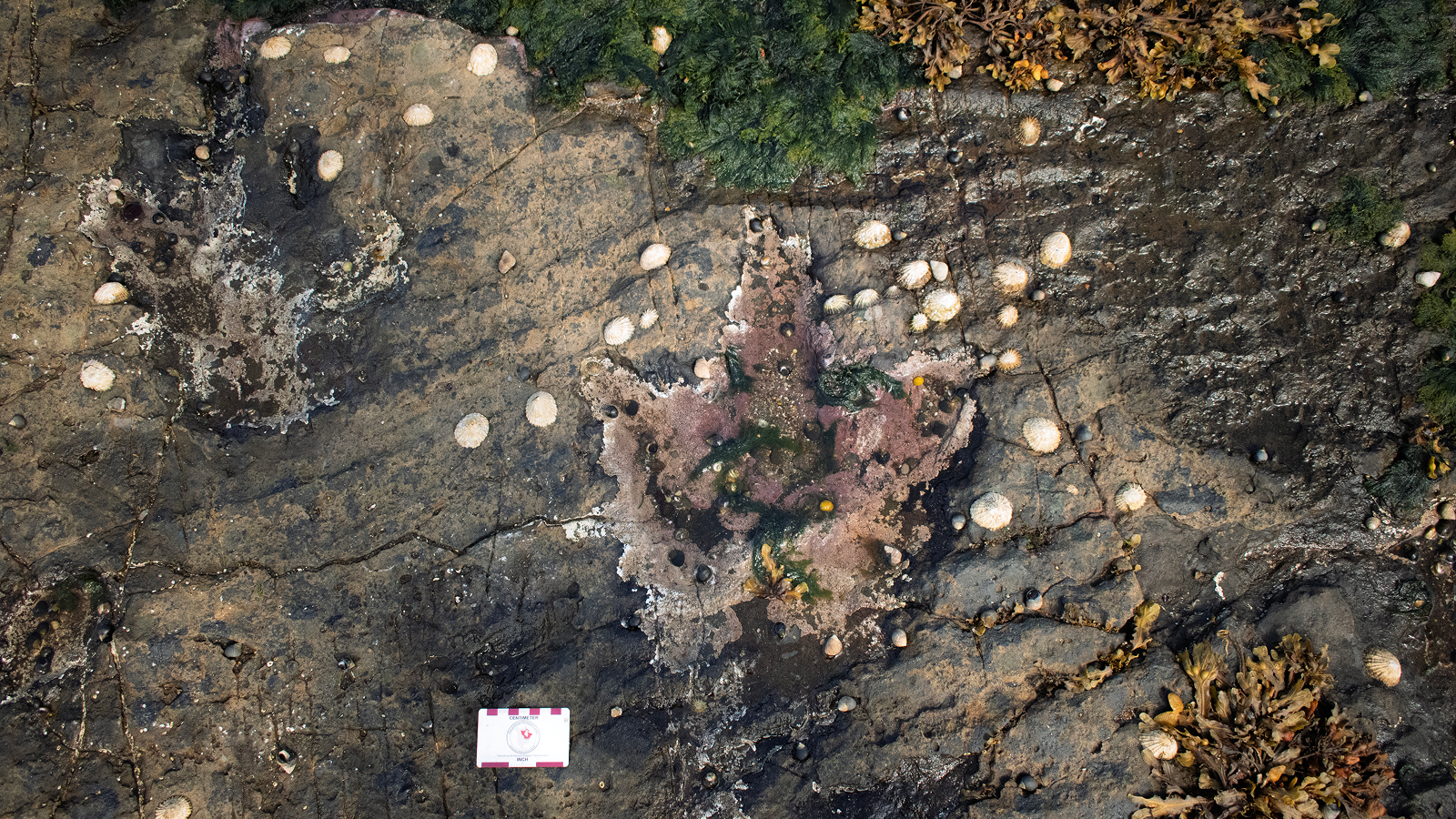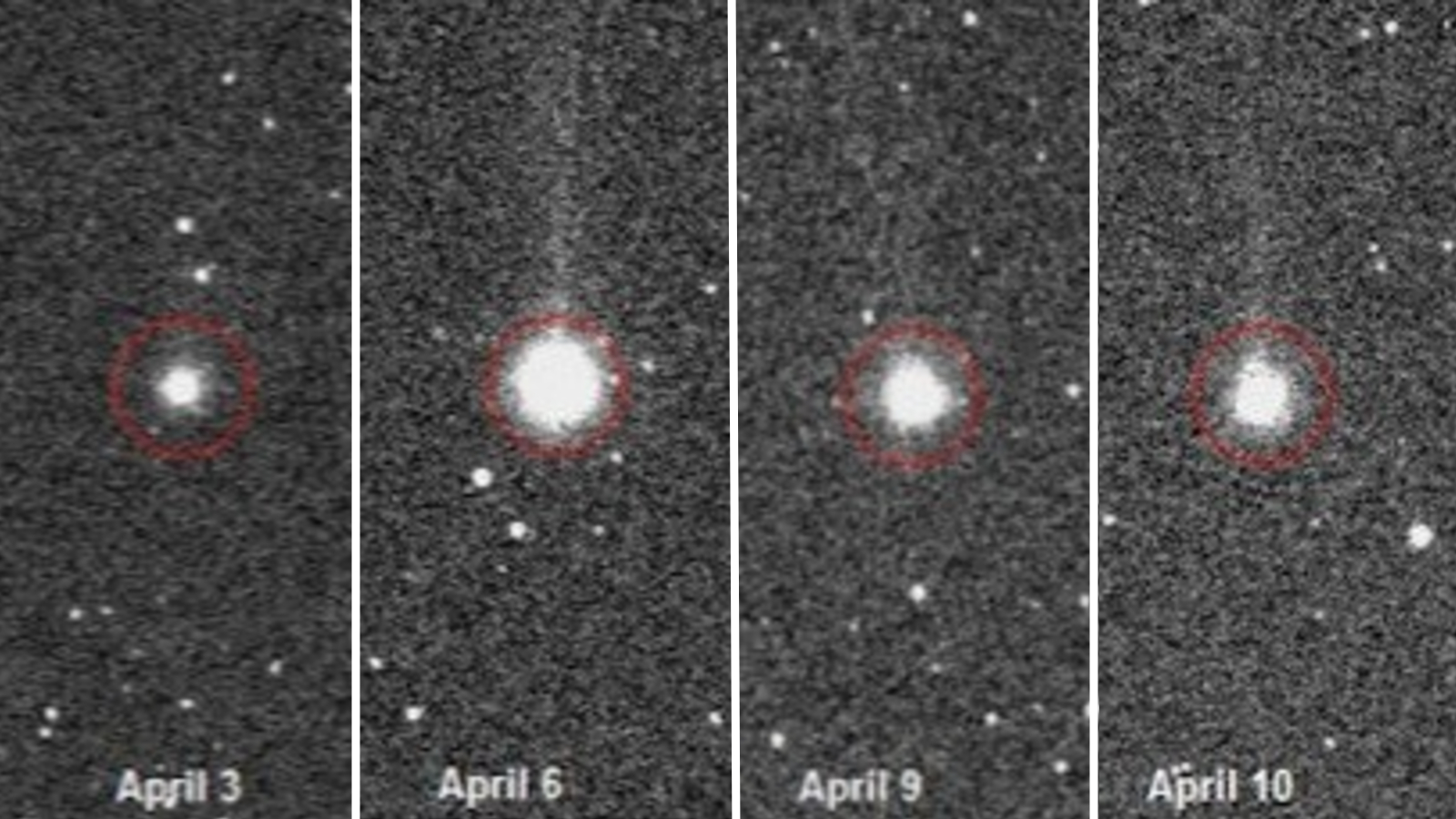Pale Blue Dot: The iconic Valentine's Day photo of Earth turns 35 today — and you're probably in it
On this day 35 years ago, NASA's Voyager 1 spacecraft took a picture that changed how we see our planet. The iconic "Pale Blue Dot" image is just as awe-inspiring today.

On Valentine's Day 1990, NASA's Voyager 1 spacecraft snapped what would become one of the most iconic images ever taken: a view of Earth from 3.7 billion miles (6 billion kilometers) away. In that moment, all of humanity was captured in a ghostly fragment of a pixel swimming through an unrelenting sea of darkness — a "Pale Blue Dot" lost in a void.
Carl Sagan — the astronomer, author, and science communicator best known for the award-winning TV series "Cosmos: A Personal Voyage" — is one of the reasons this picture exists.
As a member of the Voyager team, Sagan helped develop the Golden Records that ride aboard the twin Voyager probes, carrying emblematic examples of human culture and messages of peace to any hypothetical aliens that may one day encounter them. And following the launch of the Voyager 1 probe in 1977, Sagan also suggested that the spacecraft snap a picture of Earth on its journey to the outer solar system.
Capturing the image took a decade of planning, according to The Planetary Society, and overcame risks to the spacecraft’s sensitive cameras and layoffs of critical personnel. But after Voyager 1 finally snapped the photo from beyond the orbit of Neptune, it stored the image on its tape recorder and slowly beamed the information back to Earth's radio telescopes, pixel by pixel, over the course of three months, according to a newspaper article Sagan wrote for the Prescott Courier (now called the Daily Courier) in 1990.
Related: Earth from space — Incredible images of our planet from above
Writing in his book Pale Blue Dot (1994), Sagan's famous description of the image is just as relevant and powerful today as it was decades ago.
"Look again at that dot. That's here. That's home. That's us," Sagan wrote. "On it everyone you love, everyone you know, everyone you ever heard of, every human being who ever was, lived out their lives."
Sign up for the Live Science daily newsletter now
Get the world’s most fascinating discoveries delivered straight to your inbox.
"Every hunter and forager, every hero and coward, every creator and destroyer of civilization, every king and peasant, every young couple in love, every mother and father, hopeful child, inventor and explorer, every teacher of morals, every corrupt politician, every 'superstar,' every 'supreme leader,' every saint and sinner in the history of our species lived there — on a mote of dust suspended in a sunbeam."

Thirty-five years later, much has changed for Earth, and for the Voyager probes. Voyager 1 is over 15.5 billion miles (25 billion km) from Earth — four times farther than it was when that photo was taken, and it's still transmitting science data back to us from interstellar space (despite some occasional technical difficulties).
Unfortunately, interstellar space has proven to be a bit empty, so it looks like Voyager 1 will be spending Valentine's Day alone yet again. Hopefully, some of us on Earth can spare a little love for the spacecraft that helped us see our fragile, beautiful planet from a new perspective.

Damien Pine (he/him) is a freelance writer, artist, and former NASA engineer. He writes about science, physics, tech, art, and other topics with a focus on making complicated ideas accessible. He has a degree in mechanical engineering from the University of Connecticut, and he gets really excited every time he sees a cat.
You must confirm your public display name before commenting
Please logout and then login again, you will then be prompted to enter your display name.










